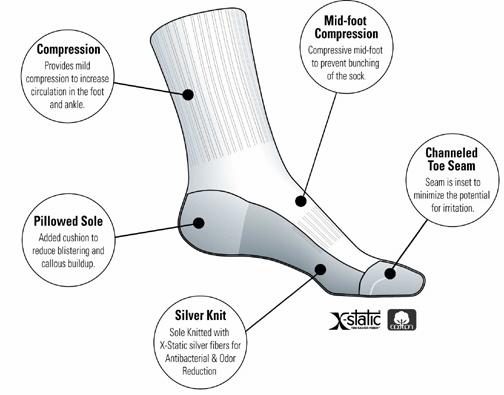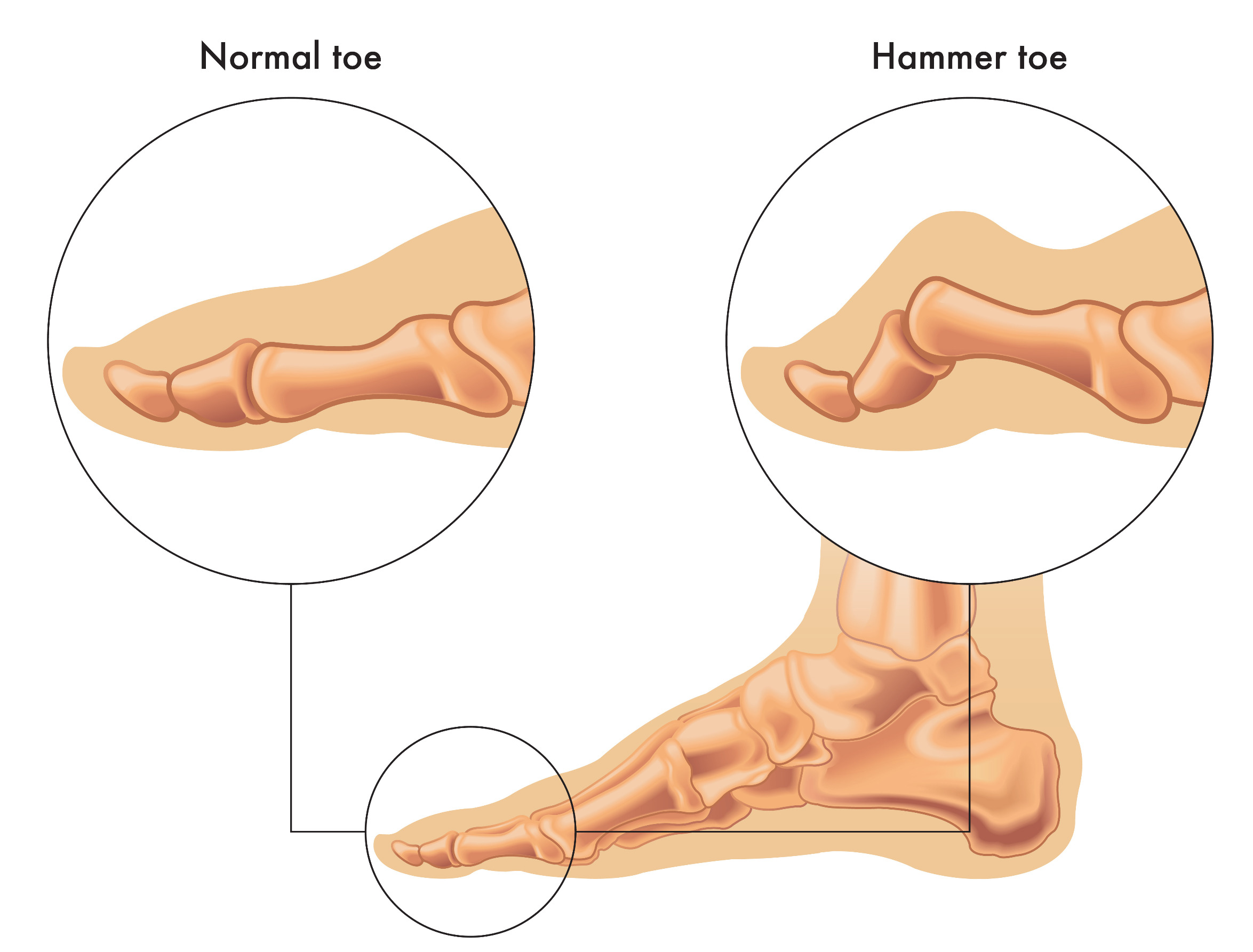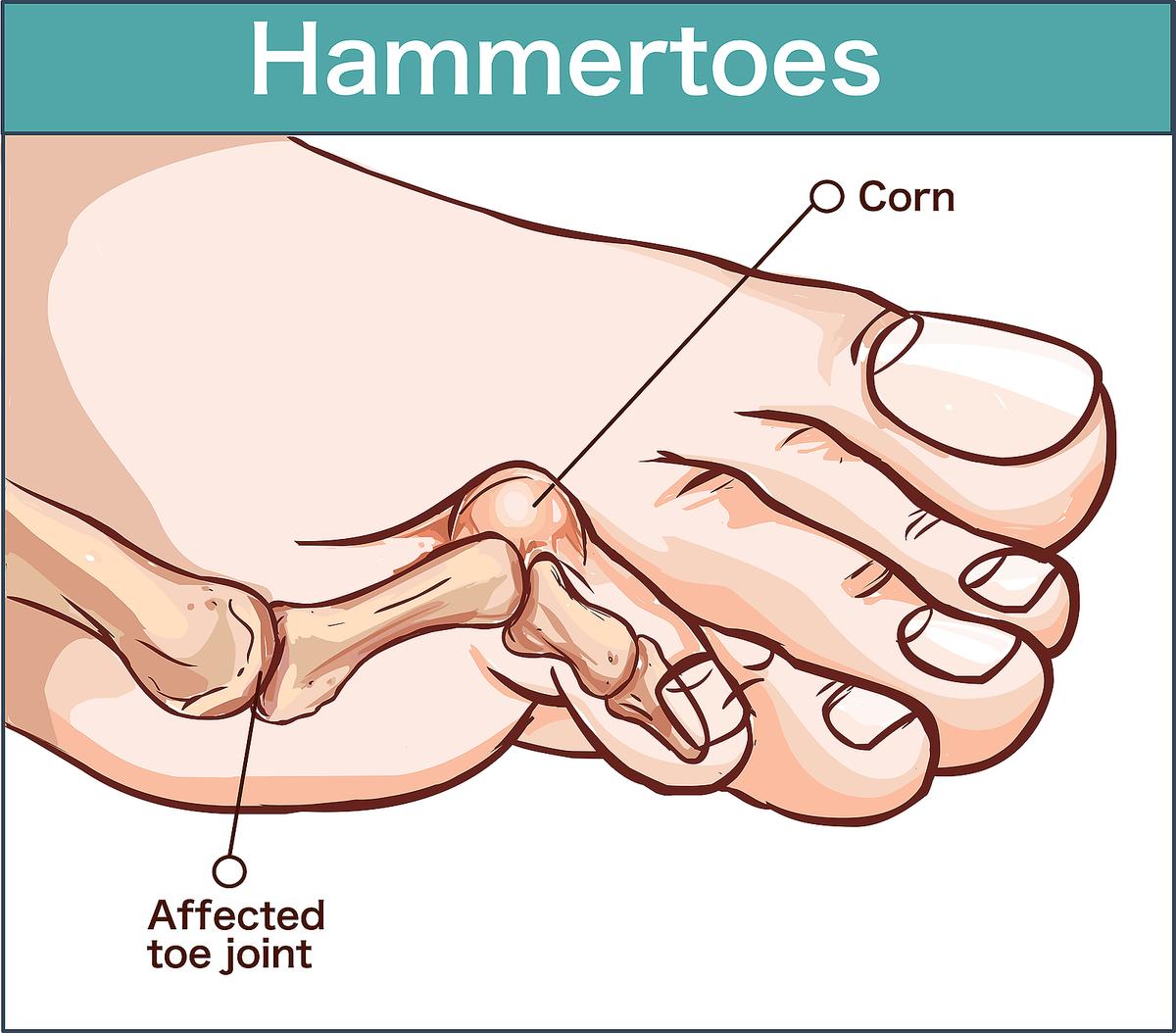Hammer Toe Self Care Accurate and Concise Answer:
Wear shoes with a roomy toe box and avoid high heels. Perform toe exercises to strengthen and stretch muscles.
Hammer Toe Self Care is a common foot deformity where the toe bends abnormally at the middle joint, resembling a hammer. This condition often results from wearing ill-fitting shoes or muscle imbalances. Early intervention through self-care can prevent further complications. Opt for shoes that provide ample space for your toes, reducing pressure and discomfort.
Regularly engage in toe exercises, such as picking up small objects with your toes, to maintain flexibility. These simple steps can alleviate pain and improve toe alignment. Self-care practices can effectively manage hammer toe, promoting foot health and preventing surgery.
Introduction To Hammer Toe
Hammer Toe Self Care is a foot condition. It causes a toe to bend abnormally. This bending affects the middle joint of the toe. It can cause pain and discomfort. The condition often affects the second, third, or fourth toes. Early care can prevent further problems.
Symptoms And Causes
Hammer Toe Self Care symptoms are easy to notice. Common symptoms include:
- Bent toe joint
- Redness and swelling
- Difficulty moving the toe
- Pain while walking
- Corns or calluses on the toe
Several factors cause hammer toe. The main causes include:
- Wearing tight shoes
- Foot injuries
- Arthritis
- Genetics
- Muscle imbalance
When To Seek Professional Help
Seek professional help if home care does not work. Visit a doctor if:
- The pain becomes severe.
- The toe becomes rigid.
- You notice open sores.
- Swelling does not reduce.
- Daily activities become difficult.
A doctor can suggest treatments. These may include special shoes, exercises, or surgery.
Footwear Modifications
Hammer toe can cause discomfort. The right footwear can help. Making smart shoe choices and adding orthotic inserts can ease the pain. Let’s explore how to make these modifications.
Choosing The Right Shoes
Choosing the right shoes is crucial. Look for shoes with a wide toe box. This gives your toes more room. Avoid high heels or tight shoes. These can worsen hammer toe.
- Wide toe box: Prevents squeezing of toes.
- Low heels: Reduces pressure on toes.
- Adjustable straps: Provides a custom fit.
Material matters too. Soft, flexible materials are best. They reduce friction and pressure. Your feet will thank you.
Benefits Of Orthotic Inserts
Orthotic inserts can be a game-changer. They provide extra support. This helps in aligning the toes properly.
- Cushioning: Adds comfort and reduces pain.
- Support: Helps in proper toe alignment.
- Custom fit: Tailored to your feet’s needs.
Some inserts are pre-made. Others are custom-made for your feet. Both types can help. They reduce pain and prevent the condition from worsening.
Here’s a quick comparison:
| Type | Benefits |
|---|---|
| Pre-made Inserts | Easy to buy, immediate relief |
| Custom-made Inserts | Perfect fit, long-term benefits |
Inserts and the right shoes can make a big difference. Try them to find relief from hammer toe.
Exercises For Flexibility And Strength
Hammer toe can be painful and challenging. Regular exercises can help. These exercises improve flexibility and strength. They can ease pain and make walking easier. Let’s explore some effective exercises.
Toe Stretches
Toe stretches are simple but effective. They help loosen tight muscles and improve flexibility.
- Toe Pulls: Sit down and cross one leg over the other. Use your fingers to pull your toes back gently. Hold for 10 seconds and repeat 5 times.
- Toe Raises: Stand up and raise your toes while keeping your heels on the ground. Hold for 5 seconds and repeat 10 times.
Strengthening Exercises
Strengthening exercises help build muscle around your toes. This can improve support and reduce pain.
- Toe Curls: Sit in a chair and place a towel on the floor. Use your toes to scrunch the towel. Repeat 10 times with each foot.
- Marble Pickup: Place marbles on the floor. Use your toes to pick them up and place them in a bowl. Repeat 10 times with each foot.
| Exercise | Repetitions | Duration |
|---|---|---|
| Toe Pulls | 5 times | 10 seconds each |
| Toe Raises | 10 times | 5 seconds each |
| Toe Curls | 10 times | Each foot |
| Marble Pickup | 10 times | Each foot |

Credit: 30seconds.com
Home Remedies
Dealing with hammer toe at home can be easy. Several home remedies can help alleviate pain and discomfort. These remedies are simple and effective. Let’s explore some of them.
Ice Therapy
Ice therapy can reduce swelling and pain. Apply ice packs to the affected toe. Do this for 15-20 minutes, several times a day.
- Wrap ice in a cloth to avoid direct contact with skin.
- Use a frozen bag of peas as an alternative.
- Be consistent to see results.
Over-the-counter Solutions
Various over-the-counter solutions can provide relief. These include pain relievers, toe pads, and cushions. They are easy to find and use.
| Solution | Use |
|---|---|
| Pain Relievers | Take as directed to reduce pain. |
| Toe Pads | Place them to cushion the toe. |
| Cushions | Use them to prevent friction. |
These remedies can make your daily life easier. Always follow instructions for best results.
Daily Foot Care Routine
Taking care of your feet is vital for managing hammer toe. A consistent daily foot care routine can help you alleviate discomfort and prevent further issues. Here are some simple steps to follow every day.
Moisturizing And Hygiene
Keeping your feet clean and well-moisturized is crucial. Every day, wash your feet with warm water and mild soap. Dry your feet thoroughly, especially between the toes, to avoid fungal infections. Apply a moisturizing lotion to keep your skin soft and prevent cracks.
| Step | Action |
|---|---|
| 1 | Wash feet with warm water and mild soap |
| 2 | Dry thoroughly, especially between toes |
| 3 | Apply moisturizing lotion |
Protective Paddings And Tapes
Using protective paddings and tapes can ease discomfort from hammer toe. You can use over-the-counter pads to cushion your toes. Taping your toes can also help realign them and reduce pain.
- Protective pads: Cushion the affected toes.
- Taping: Helps realign and reduce pain.
Follow this routine daily to keep your feet healthy and manage hammer toe effectively.

Credit: www.footankle.com
Lifestyle Adjustments
Managing hammer toe involves more than just medical treatments. Simple lifestyle adjustments can help reduce discomfort. These changes can also improve the overall health of your feet. Here are key lifestyle changes that can make a big difference.
Weight Management
Maintaining a healthy weight is crucial for foot health. Extra weight puts more pressure on your toes. This can make hammer toe symptoms worse.
Here are some tips for effective weight management:
- Eat a balanced diet rich in fruits and vegetables.
- Limit sugary and fatty foods.
- Drink plenty of water to stay hydrated.
- Exercise regularly to burn calories and stay fit.
Losing even a small amount of weight can reduce pressure on your feet. This can help ease hammer toe pain.
Activity Modifications
Changing your daily activities can help reduce hammer toe pain. Avoid activities that put extra stress on your toes.
Consider the following activity modifications:
- Choose low-impact exercises like swimming or cycling.
- Avoid high-impact sports such as running or jumping.
- Take frequent breaks to rest your feet.
- Use orthotic inserts to support your toes during activities.
Making these adjustments can prevent worsening of hammer toe. They can also help keep your feet healthy and pain-free.
When To Consider Surgery
Hammer Toe Self Care can cause pain and discomfort. Self-care methods help many people. But sometimes, surgery becomes necessary. When pain interferes with daily activities, surgery may be the best option. This section will guide you on when to consider surgery for hammer toe.
Types Of Surgical Procedures
Different surgical procedures treat hammer toe. The type depends on the severity of the condition. Here are the common types:
- Arthroplasty: Removing part of the joint to straighten the toe.
- Arthrodesis: Fusing bones to correct the toe’s alignment.
- Tendon Transfer: Realigning tendons to pull the toe into a straighter position.
- Resection: Removing a small piece of bone to reduce pain and correct the toe.
Recovery Expectations
After surgery, knowing what to expect helps in planning. Here are some points to consider:
| Aspect | Details |
|---|---|
| Recovery Time | Full recovery may take several weeks. Initial healing usually occurs within 4-6 weeks. |
| Mobility | Walking may be limited initially. Crutches or a special shoe may be needed. |
| Pain Management | Pain medication and ice packs can help manage discomfort. |
| Physical Therapy | Exercises may be required to regain strength and mobility. |
Follow your doctor’s instructions carefully. Proper care ensures a smooth recovery process.

Credit: capitalareapt.com
Preventing Hammer Toe
Preventing hammer toe is important for maintaining foot health. Simple steps can help avoid this painful condition. Learn how early detection and good foot care can make a difference.
Early Detection
Early detection is key to preventing hammer toe. Watch for signs like:
- Toe bending or curling
- Swelling or redness
- Pain in the toe joints
See a doctor if you notice these signs. Early treatment can stop the problem from getting worse.
Maintaining Foot Health
Maintaining foot health helps prevent hammer toe. Follow these tips:
- Wear shoes with a wide toe box
- Avoid high heels
- Choose supportive and cushioned shoes
Stretch your toes and feet daily. This keeps muscles and joints flexible. Consider these simple exercises:
- Toe stretches: Extend and curl your toes
- Marble pickup: Use your toes to pick up small objects
- Foot roll: Roll a ball under your foot
Keep your feet clean and dry. Moisture can lead to infections.
Check your feet regularly for changes. Early action can prevent problems.
| Foot Care Tips | Benefits |
|---|---|
| Choose proper footwear | Reduces pressure on toes |
| Stretch daily | Improves flexibility |
| Keep feet clean and dry | Prevents infections |
By following these steps, you can help prevent hammer toe. Healthy feet are happy feet!
Frequently Asked Questions
How Can I Straighten My Hammer Toes Naturally?
To naturally straighten hammer toes, perform toe stretches and exercises daily. Wear shoes with a wide toe box. Use orthotic inserts for support.
Can You Fix A Hammer Toe On Your Own?
You can’t fix a hammer toe on your own. Seek medical advice for proper treatment options. Exercises and splints may help.
Will Hammer Toe Go Away On Its Own?
Hammer toe usually doesn’t go away on its own. Treatment may include exercises, proper footwear, or surgery.
How Can I Make My Hammer Toe Feel Better?
Wear comfortable, supportive shoes with a wide toe box. Use orthotic inserts or pads. Stretch and strengthen your toes daily. Apply ice to reduce pain and swelling. Consult a podiatrist for further treatment options.
Conclusion
Taking care of hammer toe at home can ease discomfort and improve foot health. Simple exercises, comfortable footwear, and proper hygiene are key. Always consult a healthcare professional for persistent symptoms. Self-care can make a significant difference in managing hammer toe effectively.
Stay proactive and keep your feet healthy.




Leave a Reply